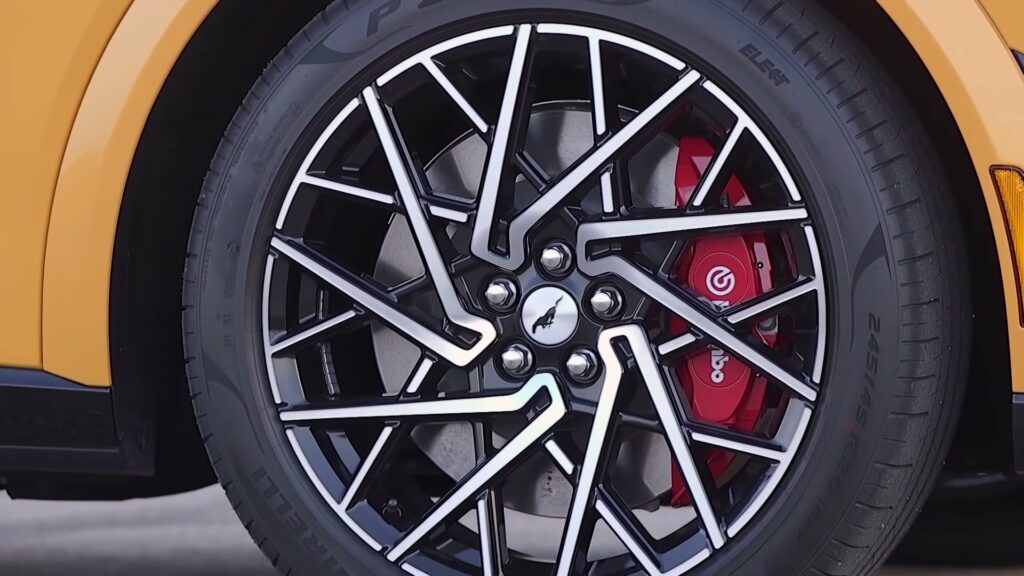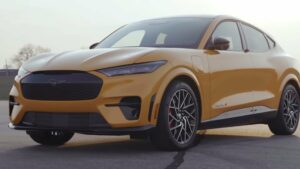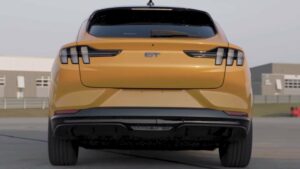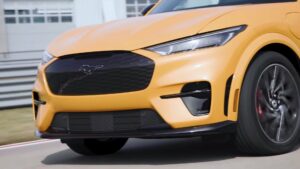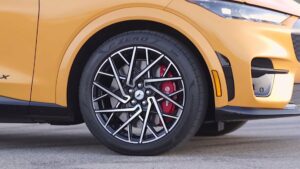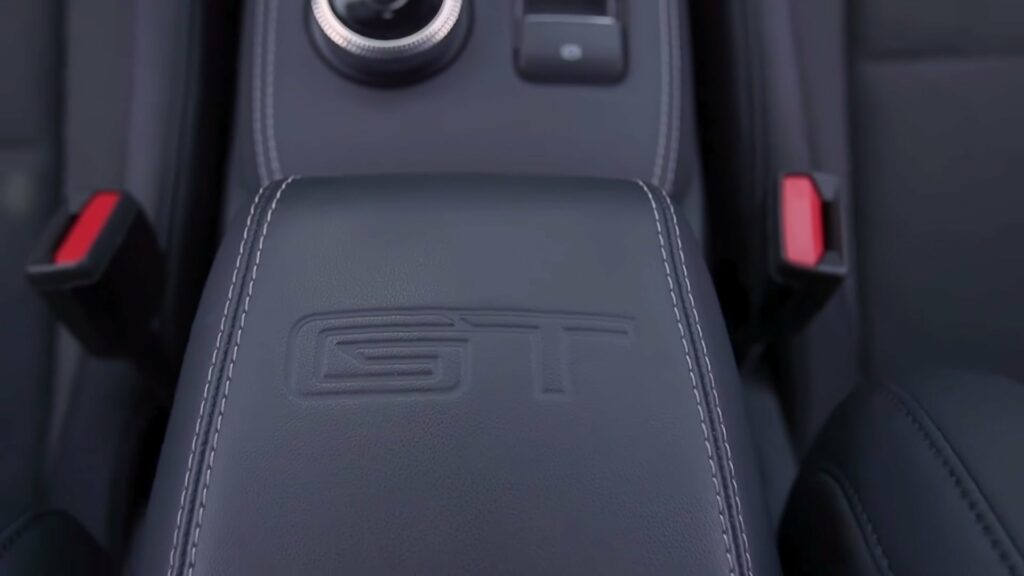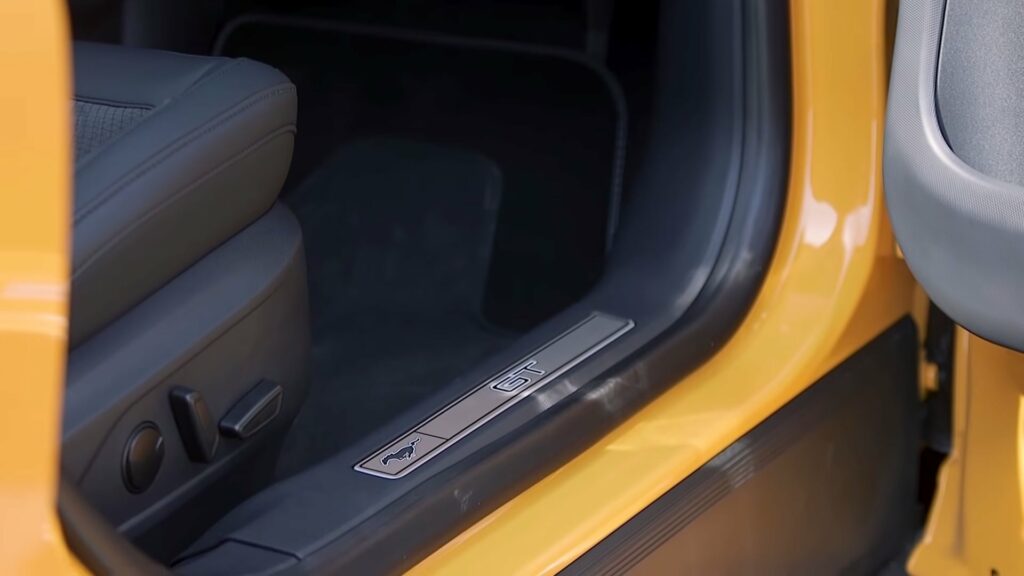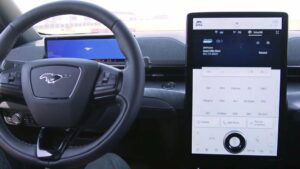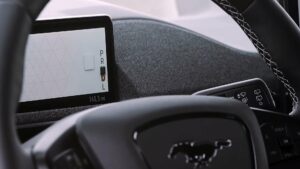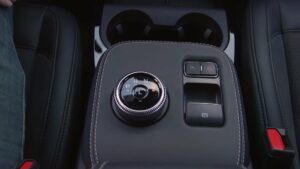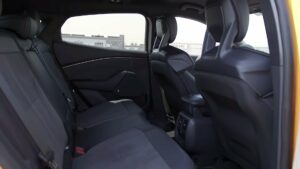Ford Mustang Mach-E GT
The Ford Mustang Mach-E GT is an all-electric SUV produced by the Ford Motor Company. It features a more powerful 98.7 kWh battery pack and has a range of up to 410 km on a single charge. The car is powered by two electric motors, one in the front and one in the rear, which together generates 358 kW, 830 Nm of torque, enabling it to accelerate from 0 to 100 km/h (60 mph) in just 4.4 seconds.
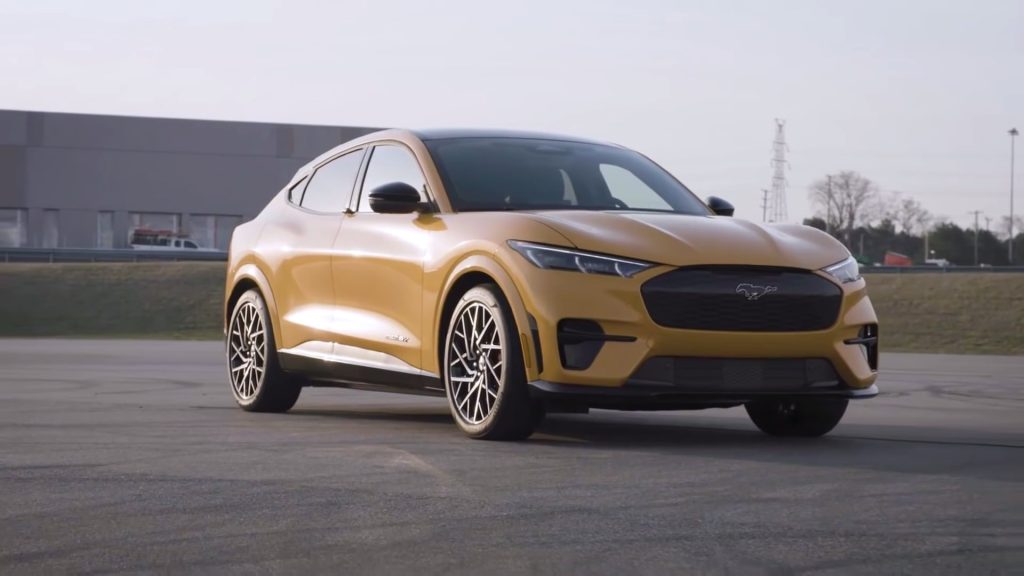
The Mach-E GT has the same sleek and sporty design as the other Mach-E models, paying homage to the iconic Ford Mustang. It also has a spacious cabin that can comfortably seat up to five passengers and is equipped with a host of modern features, including a 15.5-inch infotainment system with Apple CarPlay and Android Auto, automatic emergency braking, lane departure warning, and a rearview camera.
As for charging, the Mach-E GT can be charged from empty to full in about 10 hours and 30 minutes using a Level 2 charging station. It can also be charged to 80 percent in just 45 minutes with a 150 kW DC fast charging station.

Overall, the Ford Mustang Mach-E GT is a powerful and stylish electric SUV that offers impressive performance and range. It is ideal for drivers who need a fun and practical vehicle for daily commutes or weekend getaways, with the added benefit of all-wheel drive for improved traction and handling. The GT is the most powerful and fastest of all Mach-E models, making it a great option for drivers looking for a high-performance electric car.
| Performance | |
| Acceleration 0 – 100 km/h | 4.4 sec |
| Top Speed | 200 km/h |
| Electric Range | 410 km |
| Total Power | 358 kW (487 PS) |
| Total Torque | 830 Nm |
| Drive | AWD |
| Battery and Charging | |
| Battery Capacity | 98.7 kWh |
| Battery Useable | 88.0 kWh |
| Europe | |
| Charge Port | Type 2 |
| Port Location | Left Side – Front |
| Charge Power | 11 kW AC |
| Charge Time (0->410 km) | 9h30m |
| Charge Speed | 44 km/h |
| Fastcharge Port | CCS |
| FC Port Location | Left Side – Front |
| Fastcharge Power (max) | 150 kW DC |
| Fastcharge Time (41->328 km) | 43 min |
| Fastcharge Speed | 400 km/h |
| Energy Consumption | |
| EVDB Real Range | |
| Range | 410 km |
| Vehicle Consumption | 215 Wh/km |
| CO2 Emissions | 0 g/km |
| Vehicle Fuel Equivalent | 2.4 l/100km |
| WLTP Ratings | |
| Range | 500 km |
| Rated Consumption | No Data |
| Vehicle Consumption | 176 Wh/km |
| CO2 Emissions | 0 g/km |
| Rated Fuel Equivalent | No Data |
| Vehicle Fuel Equivalent | 2.0 l/100km |
|
Rated = official figures as published by manufacturer. Rated consumption and fuel equivalency figures include charging losses.
|
|
|
Vehicle = calculated battery energy consumption used by the vehicle for propulsion and on-board systems.
|
|
| Real Energy Consumption Estimation between 148 – 298 Wh/km | |
| City – Cold Weather * | 212 Wh/km |
| Highway – Cold Weather * | 298 Wh/km |
| Combined – Cold Weather * | 251 Wh/km |
| City – Mild Weather * | 148 Wh/km |
| Highway – Mild Weather * | 238 Wh/km |
| Combined – Mild Weather * | 189 Wh/km |
|
Energy use for each trip will vary considerably depending on the driver and the conditions. Therefore, we have provided a range of estimates which can be useful in developing an understanding of the potential benefits of this technology. |
|
| Dimensions and Weight | |
| Length | 4713 mm |
| Width | 1881 mm |
| Width with mirrors | 2097 mm |
| Height | 1625 mm |
| Wheelbase | 2984 mm |
| Weight Unladen (EU) * | 2250 kg |
| Gross Vehicle Weight (GVWR) | No Data |
| Max. Payload | No Data |
| Cargo Volume | 322 L |
| Cargo Volume Max | 1420 L |
| Cargo Volume Frunk | 100 L |
| Roof Load | 0 kg |
| Tow Hitch Possible | Yes |
| Towing Weight Unbraked | 750 kg |
| Towing Weight Braked | 750 kg |
| Vertical Load Max | No Data |
| Miscellaneous | |
| Seats | 5 people |
| Isofix | Yes, 2 seats |
| Turning Circle | 11.6 m |
| Platform | No Data |
| Car Body | SUV |
| Segment | JD – Large |
| Roof Rails | No |
| EV Dedicated Platform | No Data |
Home and Destination Charging (0 -> 100%)
A public charging station is required to use the highest possible charging rate. The EVSE/charging station’s charging capacity affects how long it takes to fully charge the battery. The table below shows all possible options for fully charging the Ford Mustang Mach-E GT.
In Europe, plugging an electric car into an outlet is often as easy as plugging it into a household outlet, but there are differences from country to country. The table below shows the different ways to charge the Ford Mustang Mach-E GT, but in some countries some chargers may not be available.
Type 2 ( IEC 62196)

| Charging Point | Max. Power | Power | Time | Rate |
| Wall Plug (2.3 kW) | 230V / 1x10A | 2.3 kW | 45 hours | 9 km/h |
| 1-phase 16A (3.7 kW) | 230V / 1x16A | 3.7 kW | 28 hours | 15 km/h |
| 1-phase 32A (7.4 kW) | 230V / 1x32A | 7.4 kW | 14 hours | 29 km/h |
| 3-phase 16A (11 kW) | 400V / 3x16A | 11 kW | 9h30m | 43 km/h |
| 3-phase 32A (22 kW) | 400V / 3x16A | 11 kW | 9h30m | 43 km/h |
Fast Charging (10 -> 80%)
If you want to enjoy driving an electric car, one of the most important features to consider is the number of miles per hour the car can travel while charged. This is called the “range” of the car. All electric cars have a certain range, even if they are 100% charged. This is because they do not have an internal combustion engine to lean on if you need to drive a long distance.
Max. Power: The maximum power provided by the charging point
Avg. Power: The average power provided by the charging point during a session of 10% to 80%.
Time: the time it takes to charge from 10% to 80%
Speed: the average charging rate during the session of 10% to 80%
Combined Charging System (CCS Combo 2)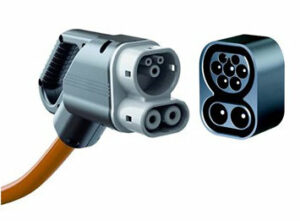
| Charging Point | Max. Power | Avg. Power | Time | Rate |
| CCS (50 kW DC) | 50 kW | 45 kW | 86 min | 200 km/h |
| CCS (100 kW DC) | 100 kW | 75 kW | 52 min | 330 km/h |
| CCS (150 kW DC) | 150 kW | 90 kW | 43 min | 400 km/h |
| Brand | Ford |
| Model | Mustang Mach-E GT |
| Body Style | SUV |
| Car Engine | electric |
| Motor power | 358 |
| Maximum Torque, Nm | 830 |
| Battery Energy, kWh | 98.7 |
| Power reserve (NEDC/EPA/WLTP), km | - / - / 410 |
| Level Charging (230/400/DC), hours | - / 9.3 / 0.52 |
| Electrical Acceleration, 0-100 km/h (0-62.1 mph) in sec | 4.4 |
| Top Speed, km/h | 200 |
















